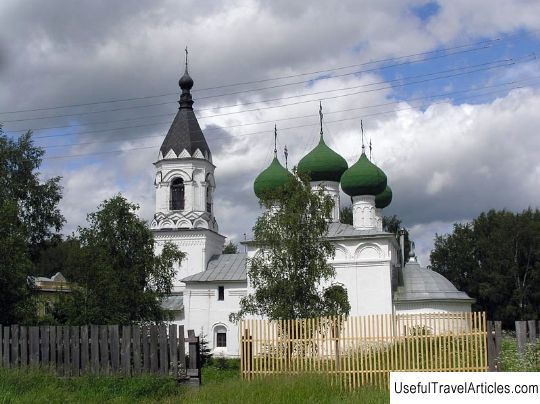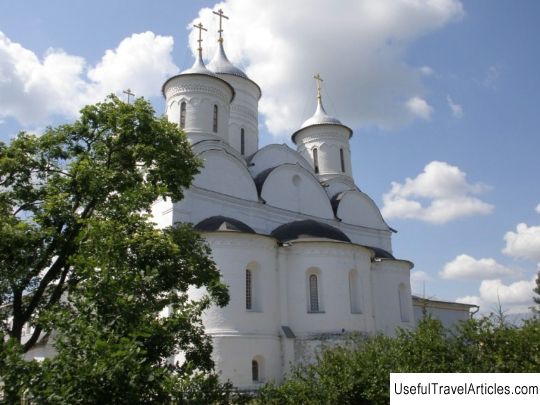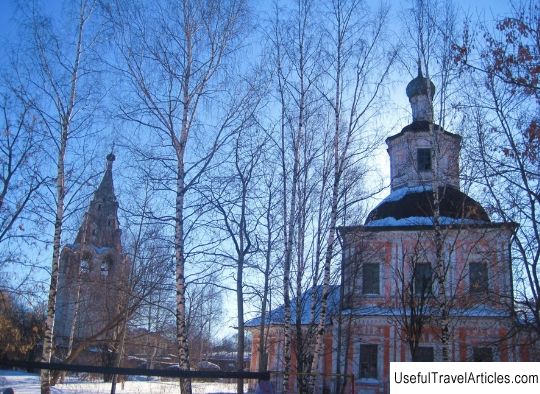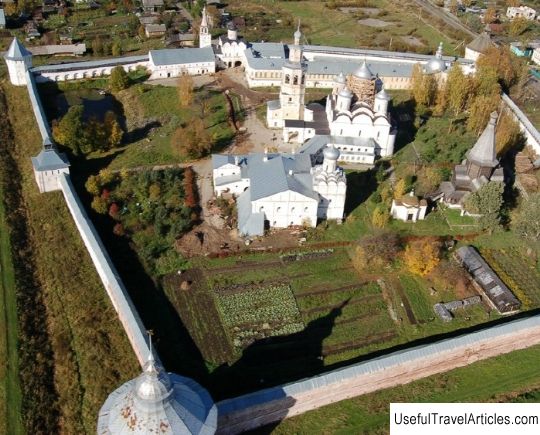Saint Sophia Cathedral description and photos - Russia - North-West: Vologda
Rating: 9,5/10 (5940 votes) 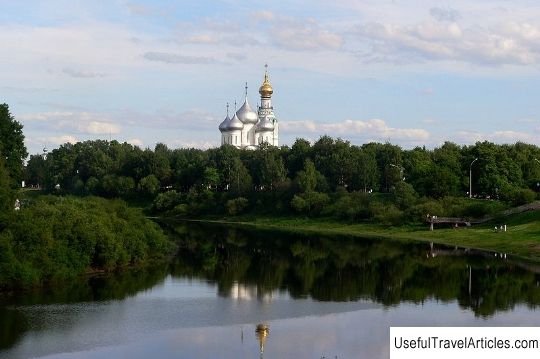
St. Sophia Cathedral description and photos - Russia - North-West: Vologda. Detailed information about the attraction. Description, photos and a map showing the nearest significant objects. Photo and descriptionThe most ancient monument of the city of Vologda, which plays an important role in the overall urban ensemble, is the St. Sophia Cathedral. Churches of this kind are considered a characteristic feature of Russian architecture of the 16th century and are one of the most common types of monastic and city cathedrals, having a source of origin - the Moscow Assumption Cathedral. But besides this, the Vologda Cathedral has significant differences from similar temples, taking into account the prototypes, in the context of the laconicism of the architecture, which gives the temple a northern austerity. Another important distinctive feature is the location of the cathedral altar, which is directed to the north-east, which was carried out at the behest of Ivan the Terrible. Most likely, the tsar wanted the altar to face the Vologda river, however, this was contrary to all the traditions of building Orthodox churches. In 1571, there were opinions that the Crimean Khan attacked Moscow. These events prompted the tsar to leave Vologda, although the construction of the Sophia Cathedral was not completed. The end of construction did not come even after 17 years, and only under Fedor Ioannovich was the cathedral building finally completed, although the finishing was not completed: only the southern limit was completed, and the middle part was completed much later. His Grace Anthony, Bishop of Great Perm and Vologda, consecrated the chapel in honor of the Dormition of the head of John the Baptist. After a while, the main throne of the St. Sophia Cathedral was also consecrated. In 1612, when the Polish-Lithuanian troops attacked Vologda, not only St. Sophia Cathedral, but many other churches have suffered greatly from fires and robberies, which is why it became necessary to re-consecrate both thrones. The restoration of the cathedral required a considerable amount of funds, so funds were collected from all diocesan churches. Already in 1627, the new St. Sophia Cathedral became a stone three-altar temple with five chapters. The painting of the temple was carried out during 1685-1687 by Yaroslavl craftsmen with the work supervisor Dmitry Plekhanov. Another ancient monument of Vologda is the bell tower of the St. Sophia Cathedral, located between the Resurrection and Sophia Cathedrals and adjoining the wall of the Bishops' court. The first bell tower at St. Sophia Cathedral appeared in the 20s of the 17th century. In 1627, the scribal book mentions this bell tower as wooden and octagonal, with a hipped roof. In the bell tower there were "two shelves", a clock, three stairs, and 11 bells: 9 small and medium and 2 large. In 1636, the first bell tower burned down, and the new one was cut down in 1642. During 1654-1659, the wooden bell tower was replaced by a pillar-shaped, stone, octagonal bell tower, crowned with a small dome and having a hipped stone top. In the 1860s, Archbishop Pallady preferred to see the bell tower of St. Sophia Cathedral as the highest in the entire diocese, and the ancient bell tower, which existed for over 200 years, underwent major changes, for example, the hipped top of the bell tower and the ringing were removed, and the lower tier became the basis of a new, more large and high bell tower. The construction of the new bell tower lasted from 1869 to 1870 according to the project of the architect V.N. Schildnecht. It has come down to us almost without any changes. The pseudo-Gothic forms of the present Sofia bell tower are closely connected with the onion dome, which was gilded in the late 19th - early 20th centuries. In all the appearance of the belfry, one can clearly see the imitation of the ancient Russian architecture. The overall silhouette turned out to be especially successful, perfectly expressing its function - to serve as the main bell tower in the diocese of the temple. On the bell tower of St. Sophia Cathedral, a kind of museum of bells has been preserved, represented by Russian, Dutch and German bells of the 17th, 18th and 19th centuries. Of particular interest are the bells with the names characteristic of that time: "Water carrier", "Sentry", "Great Lent", "Small Swan".
        We also recommend reading Union Terrace Garderns description and photos - Great Britain: Aberdeen Topic: Saint Sophia Cathedral description and photos - Russia - North-West: Vologda. |
